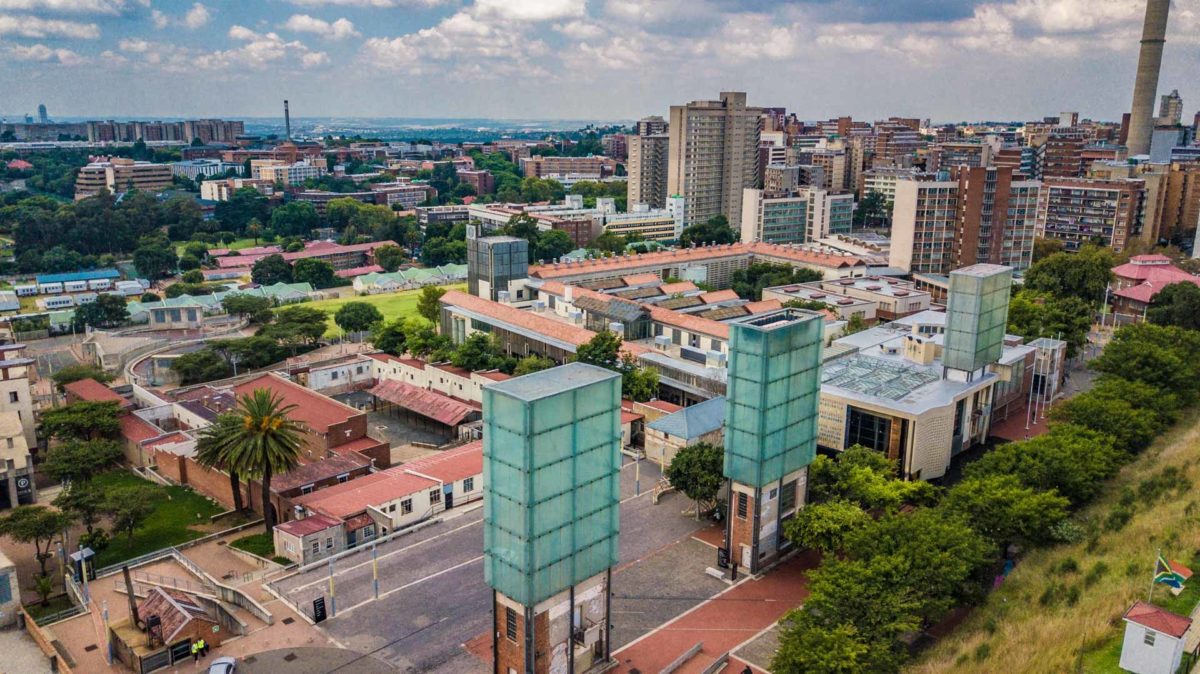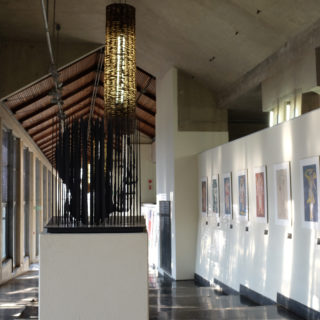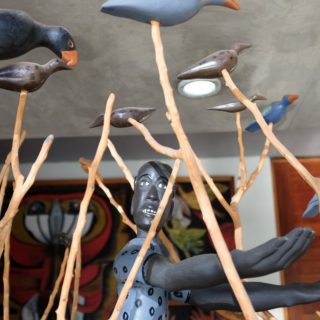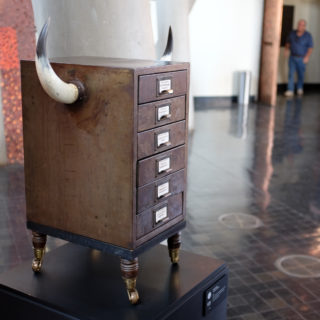The Constitutional Court Art Collection
Part of what makes the Constitutional Court such a remarkable building is its fusion of architecture, art and adornment. It is a space that reflects a profound interest in humanity and a deep yearning for justice, both of which are evidenced in the court’s aesthetic, including its permanent, curated art collection.
The curation of this collection was driven by Justices Albie Sachs and Yvonne Mokgoro, who began the process of decorating the court with a budget of just R10 000. This sum was spent outright when Sachs and Mokgoro commissioned Joseph Ndlovu to create a tapestry that would reflect humanity and social interdependence in the new democratic South Africa’s Bill of Rights. The tapestry, titled Humanity, is on display in the collection today.
A spark, however, had been ignited, and in a spontaneous, serendipitous upswell of interest, artists quickly came forward to be a part of the new Constitutional Court (even though the court at Constitution Hill was still under construction at the time).
Prominent South African artist Cecil Skotnes donated a panel depicting his interpretation of democracy, a work called Freedom. Willie Bester’s Discussion, William Kentridge’s Sleeper – Black, Robert Hodgins’ Hotel with Landscape and Marlene Dumas’s The Benefit of the Doubt soon followed. A special ceremony was held for the installation of The Man Who Sang and the Woman Who Kept Silent by Judith Mason, a work that is based on proceedings at the Truth and Reconciliation Commission and one that is now perhaps the court’s most famous piece.
The court’s walls – first at its humble premises in Johannesburg and later at Constitution Hill – quickly began to fill up, and ultimately spilled over into the judges’ chambers and meeting rooms.
Of course, additional funding was required to curate the collection. With the new government focused on health, education and other key areas, and investment from the private sector prohibited because the court cannot accept support from private firms or individuals who could one day be litigants before it, the court accepted grants from various European governments and from North American philanthropic organisations.
Today, art not only adorns the walls of the Constitutional Court at Constitution Hill. It is in the foyer’s chandeliers and light fittings, designed by sculptor Walter Oltmann. It is in the court’s rugs, carpets and acoustic panels, designed by Andrew Verster. It is in the engraved doors, carved gates and mosaicked columns, and in the abundant use of texture and symbolism.
The Constitutional Court Art Collection (CCAC) is owned and cared for by the Constitutional Court Trust (CCT). To learn more about the CCAC, visit its dedicated website: https://ccac.concourttrust.org....

 +27 11 381 3100
+27 11 381 3100




